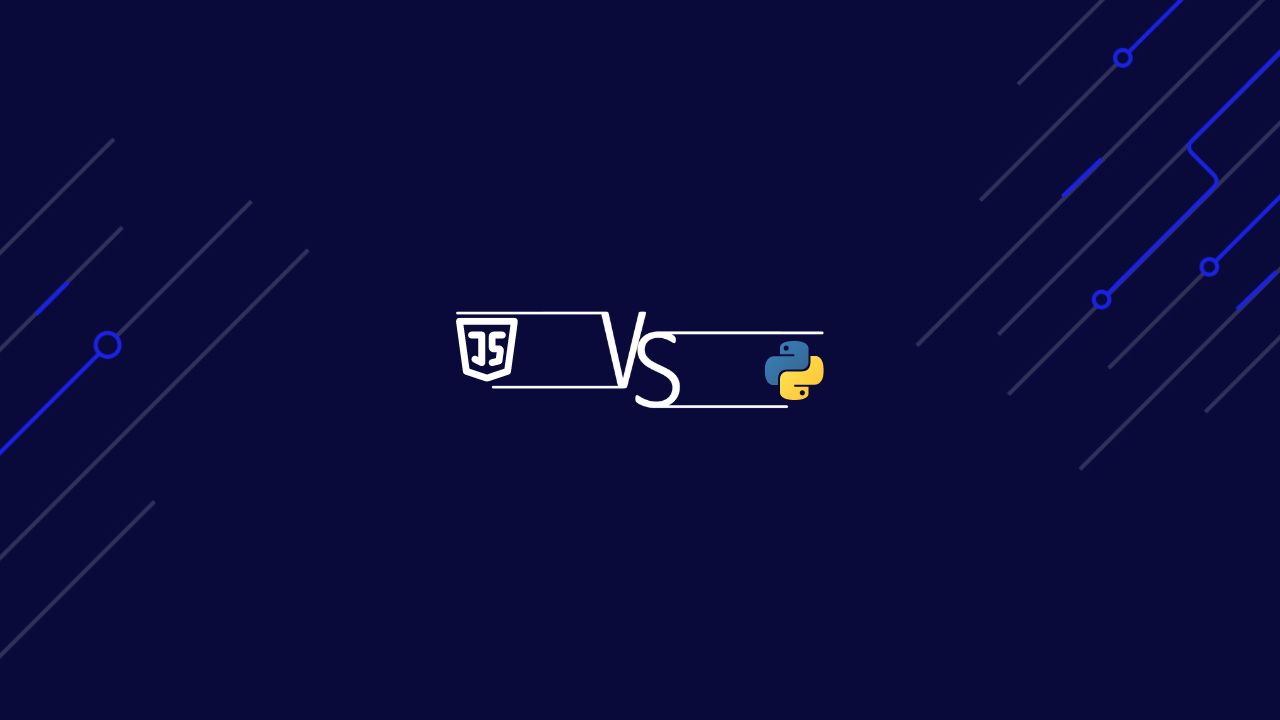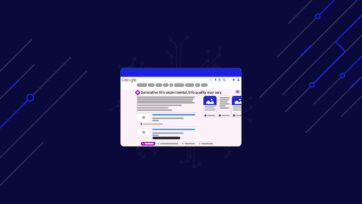When deciding which language is better for web scraping – particularly for e-commerce platforms like Amazon and Walmart – it’s important to consider various factors that impact the effectiveness and efficiency of the scraping process.
In this article, I will guide you through the key considerations when choosing between JavaScript and Python for scraping large amounts of product data from e-commerce marketplaces.
We’ll cover the following topics to help you make an informed decision:
- The main challenges when scraping ecommerce marketplaces
- Why you should use Python for web scraping
- Why you should use JavaScript for web scraping
- JavaScript vs. Python for web scraping Ecommerce websites [close comparison]
By the end of this article, you’ll have a clearer understanding of the strengths and weaknesses of each language, enabling you to choose the one that best suits your web scraping needs for e-commerce data.
ScraperAPI easily integrates with any techstack and workflow, scaling and simplifying product data collection, price monitoring, and competitive analysis.
JavaScript vs. Python for E-commerce Scraping
Here’s a comparison of JavaScript and Python for e-commerce scraping based on various metrics:
| JavaScript | Python | |
| Ease of Use | Asynchronous programming can be tricky. | Simple syntax and readable. |
| Performance | Great with Node.js for non-blocking I/O. | Can lag behind JavaScript in speed. |
| Libraries | Puppeteer, Cheerio, and many npm packages. | BeautifulSoup, Scrapy, Selenium. |
| Data Manipulation | Fewer built-in options. | Pandas and NumPy are powerful tools. |
| Handling Dynamic | Designed for web | Selenium and Scrapy |
| Content | interactions. | handle it well. |
| Working with APIs | Asynchronous support is superb. | Many libraries make it easy. |
Of course, there are many nuances we need to explore before deciding between JavaScript and Python for our scraping project. Let’s dive deeper into each language’s capabilities.
Why You Should Use Python for Web Scraping
Python is a popular choice for web scraping, especially for e-commerce platforms like Amazon. Here are some of the key reasons why Python stands out:
Python is easy to use and learn
Python is known for its simple and readable syntax, making it easy for beginners to pick up and start scraping data quickly. Its straightforward coding style reduces the learning curve and helps write and maintain clean code.
Python has powerful libraries for web scraping
Python offers a variety of libraries explicitly designed for web scraping:
- BeautifulSoup: A library for parsing HTML and XML documents. It helps navigate, search, and modify the parse tree</a >.
Resource: Using BeautifulSoup for web scraping</a >
- Scrapy: A robust and fast high-level web crawling and web scraping framework that can handle large-scale scraping projects efficiently.
Resource: Web scraping in Scrapy for beginners</a >
- Selenium: While primarily used for web testing, Selenium can automate web browser interaction, making it helpful in scraping dynamic content.
Resource: Selenium web scraping [full guide]</a >
Python has the most libraries for data manipulation
Python excels in data scraping, data manipulation, and analysis. Libraries such as:
- Pandas: Ideal for data manipulation and analysis, providing data structures and operations for manipulating numerical tables and time series.
- NumPy: A fundamental package for scientific computing supporting arrays, mathematical functions, and random number generation.
Limitations of scraping with Python
While Python is highly effective for web scraping, it does have some limitations:
Performance compared to Node.js
Python can be slower than Node.js in terms of execution speed. This difference in performance can become significant when dealing with large-scale scraping projects. Node.js, with its non-blocking I/O operations, might handle multiple requests more efficiently.
Memory consumption
Python can consume more memory than Node.js. Extensive scraping tasks can lead to higher memory usage, potentially causing slower performance or requiring more powerful hardware to maintain efficiency.
Asynchronous processing
Although Python supports asynchronous programming, it is not as seamless as in Node.js. Node.js is built with asynchronous programming, making it more suitable for tasks requiring handling simultaneous connections or requests, such as scraping sites with dynamic content loaded through JavaScript.
Error handling and debugging
Python’s error handling and debugging for web scraping can be more complex than Node.js, as the latter offers better tools and frameworks that simplify error handling, making it easier to manage and debug issues that arise during the development and scraping process.
Compatibility with modern web technologies
Web technologies evolve rapidly, and sometimes Python libraries may need to catch up in supporting the latest web standards or JavaScript frameworks. Node.js, being inherently JavaScript-based, often adapts more quickly to these changes, making it more compatible with modern web technologies used by many e-commerce sites.
Despite these limitations, Python is still a powerful tool for web scraping, especially for tasks that need simple coding and strong data handling. Being aware of these challenges can help you better prepare and address potential issues, allowing you to use Python effectively for your scraping projects.
Python scraping example
Here’s an example of how to scrape product data from Amazon using Python and ScraperAPI’s Structured Data Endpoints</a > – which takes care of data transformation by parsing the page and returning all relevant data points in JSON (or CSV) format.
To run this example, sign up for a free ScraperAPI account</a > and replace ‘YOUR_SCRAPERAPI_KEY’ with your actual API key:
import requests
import json
# Payload with API key and product ASIN
payload = {
'api_key': 'YOUR_SCRAPERAPI_KEY',
'asin': 'B09R93MDJX'
}
# Make the request to ScraperAPI's structured data endpoint for Amazon
response = requests.get('https://api.scraperapi.com/structured/amazon/product', params=payload)
product = response.json()
# Export scraped data into a JSON file
with open('product-details.json', 'w') as f:
json.dump(product, f)
ScraperAPI helps you avoid getting your IP banned by rotating IP addresses, handling CAPTCHAs, and managing request limits. It simplifies the entire scraping process by providing reliable access to web pages, ensuring you can focus on extracting and analyzing data rather than handling anti-scraping measures.
Using Python along with ScraperAPI makes scraping large amounts of data from e-commerce sites like Amazon feasible, efficient, and manageable.
ScraperAPI dedicated endpoints turn raw HTML into structured JSON or CSV data from domains like Amazon, Walmart, and more.
Why You Should Use JavaScript for Web Scraping
JavaScript is a powerful language for web scraping, mainly for dynamic websites. Here are some reasons why you might choose JavaScript for scraping:
JavaScript is natively suited to handle dynamic content
JavaScript can easily interact with and manipulate dynamic content rendered by other JavaScript on the page. This makes it particularly effective for scraping modern websites relying heavily on JavaScript to display data.
JavaScript’s asynchronous capabilities are more advanced
JavaScript, especially with Node.js, excels in handling asynchronous operations. This is beneficial for web scraping tasks that require fetching multiple resources simultaneously, reducing the overall scraping time.
JavaScript has versatile libraries and frameworks for dynamic content scraping
JavaScript also offers a variety of libraries and frameworks that simplify web scraping:
- Puppeteer: A Node library that provides a high-level API to control headless Chrome or Chromium, helpful in scraping and automating web interactions.
- Cheerio: A fast, flexible, and lean implementation of core jQuery designed specifically for the server, making it ideal for parsing and manipulating HTML.
Resource: JavaScript web scraping: beginner’s guide</a >.
The combination of these libraries makes JavaScript/Node.js the best choice for scraping single-page applications and dynamic sites.
Limitations of Scraping with JavaScript
While JavaScript offers significant advantages for web scraping, especially with dynamic content, it also has some limitations:
Complexity of Setup
Setting up a JavaScript scraping environment can be more complex compared to Python. Tools like Puppeteer and Cheerio require a deeper understanding of JavaScript and Node.js, which might pose a steep learning curve for beginners.
Resource Intensive
JavaScript, particularly when using headless browsers like Puppeteer, can be resource-intensive. Running multiple instances of a headless browser to scrape data can quickly consume CPU and memory resources, leading to potential performance bottlenecks, meaning you’ll need to invest in more expensive hardware to keep your scraper running at large scale.
Maintenance Challenges
Scraping scripts in JavaScript may require frequent updates to keep up with changes in the structure and behavior of target websites. E-commerce sites often update their JavaScript frameworks and content delivery methods, necessitating constant script maintenance.
Lack of Mature Data Handling Libraries
While JavaScript has libraries for web scraping, it lacks the mature and comprehensive data manipulation and analysis libraries that Python offers, such as Pandas and NumPy. This can make post-scraping data processing more cumbersome and less efficient.
Less Robust Community Support
The web scraping community in Python is more mature and larger compared to JavaScript. This means there are more resources, tutorials, and forums available for troubleshooting and improving Python scraping scripts. The relatively smaller community in JavaScript might limit access to immediate help and advanced best practices.
Debugging and Error Handling
Although debugging Node.js is easier than debugging Python scripts, it is still challenging when compared with strongly typed programming languages.
Node.js and browser-based scrapers might encounter issues that are harder to diagnose and resolve, particularly for those not deeply familiar with asynchronous programming and JavaScript’s event-driven architecture.
That said, developers can use TypeScript to add more debugging capabilities to their scripts, giving them an advantage over Python scripts in large projects.
JavaScript Scraping Example
Here’s an example of scraping Amazon product data using JavaScript and ScraperAPI’s Structured Data Endpoint:
let APIKEY = 'YOUR_SCRAPERAPI_KEY';
let ASIN = 'B09R93MDJX';
async function fetchData() {
try {
let response = await fetch(`https://api.scraperapi.com/structured/amazon/product?api_key=${APIKEY}&asin=${ASIN}`);
if (!response.ok) {
throw new Error('Network response was not ok ' + response.statusText);
}
let data = await response.json();
} catch (error) {
console.error('There has been a problem with your fetch operation:', error);
}
}
fetchData();
Using ScraperAPI’s Structured Data Endpoint with Javascript makes the scraping process easier by directly providing well-organized data. This eliminates the need to parse HTML manually and handle complex scraping logic.
In most scenarios, you would use JavaScript over Python to scrape dynamic sites using Puppeteer. However, ScraperAPI offers a powerful rendering engine that can take care of this task for you as well.
By sending your request through ScraperAPI, you can tell it to render your target site before returning the page’s HTML</a >.
For more complex sites requiring interaction, ScraperAPI also offers a browser injection</a > feature. This feature enables you to give specific instructions to the renderer, like clicking an element, waiting for a specific period of time, or even scrolling through the site.
The Main Challenges When Scraping Ecommerce Marketplaces
Scraping data from e-commerce marketplaces like Amazon and Walmart comes with unique challenges. Here are the main obstacles you might face:
- Pagination: Many e-commerce sites spread their products across multiple pages. Navigating through these pages to gather all the data can take time and effort. Python makes it easier to handle pagination using a Scrapy crawler</a >.
-
JavaScript Rendering: E-commerce sites often use JavaScript to load content. Traditional scraping tools might not capture this data, so you may need tools that handle JavaScript.
Puppeteer in Node.js is a great choice for this task, although tools like Selenium can also make it possible with Python.
-
Large Amounts of Data: Scraping product data means dealing with a lot of information. This requires efficient methods to store and process the data without slowing down your system.
Both JavaScript and Python can handle large amounts of data, but JavaScript will definitely perform better than Python. On the other hand, Python will offer the most options for data manipulation, which can increase productivity by automating more steps of the scraping process.
-
Anti-Scraping Measures: Many e-commerce platforms protect their data by using CAPTCHAs, blocking IPs, and limiting request rates. Overcoming these barriers involves rotating IP addresses and mimicking actual user behavior.
To handle this challenge, you’ll need a scraping tool like ScraperAPI. This tool allows your scrapers to bypass anti-bot mechanisms and access the data you need.
-
Dynamic Content Loading: Some content on e-commerce sites loads asynchronously. This means your scraper needs to wait for all the content to load before extracting data.
Again, Puppeteer might be the best choice for collecting this type of data. However, with ScraperAPI, you can collect dynamic content just as easily using Python.
-
Data Consistency and Accuracy: Ensuring the data you scrape is consistent and accurate is crucial. For this, it’s essential to capture product listings, prices, and availability variations without duplicates or errors.
Of course, to obtain consistent data from your target sites, you’ll also need advanced IP rotation and anti-bot detection bypassing</a >.
-
Legal and Ethical Considerations: Always scrape data in compliance with legal regulations and the websites’ terms of service. This includes respecting robots.txt files and not overloading servers with too many requests.
When using ScraperAPI with Python or JavaScript, your scrapers will be 100% compliant with web scraping ethical practices.
By understanding these challenges, you can create better strategies for efficiently scraping e-commerce marketplaces.
Wrapping Up: JavaScript vs Python for Web Scraping
Choosing between JavaScript and Python for e-commerce web scraping depends on your needs.
- JavaScript excels in handling dynamic content and performance, making it great for modern web interactions.
- Python is ideal for beginners and complex data tasks thanks to its simple syntax and powerful data manipulation libraries.
Each language has strengths, so choose the one that best suits your project and your team’s expertise.
No matter the programming language you choose, you’ll need to use a scraping tool to access the necessary infrastructure to consistently scrape your target sites.
Don’t know where to start? Check our guide on choosing the right web scraping tool</a > and start collecting web data at scale.
Until next time, happy scraping!
Related information about eCommerce web scraping and proxies you might like:




